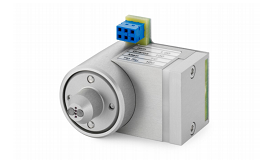Technical Documents and Information
Mercury Probe
- Calibrating the three functions mercury probe with an oxidized sample
- Maintenance: changing mercury, general cleaning
- Tecnical note: mercury contamination of Silicon
- Solve the mercury droplet issues
- Measuring very small samples with the mercury probe
- Ideas for better measurements
MDC Components and Calibration Wafers:
- MDC Common Optional Equipment: Reference Wafer and Hg Spill Kit
- Probe Tips specifications
- Micropositioners specifications
Four Point Probe Measurements:
Some Scientific Literature using our Products
MDC C-V and I-V systems:
- Dielectric constant and its temperature dependence for GaAs, CdTe, and ZnSe (direct link): The dielectric constants of GaAs, CdTe, and ZnSe and their temperature dependences were found from low‐frequency capacitance measurements.
- Impurity peak formation during proton-enhanced diffusion of phosphorus and boron in silicon (direct link): In this study a sample temperature of 700°C, proton-beam energies of 50–140 keV, proton-beam current densities of ∼1 μA/cm2, and proton-bombardment times of 3 min to 3 h were used. The resultant impurity profiles were obtained using Schottky-barrier differential C–V techniques.
- Effect of radiation induced defects on the capacitance of silicon detectors, 1992 (direct link): The capacitance was measured at different frequencies and temperature. It was shown that the capacitance of the irradiated detectors strongly depends upon temperature.
- Electrical properties of ion-implanted p-n junction diodes in β-SiC, 1988 (direct link): High-temperature implantation of Al(+) into n-type and of N(+) into p-type beta-SiC (100) thin films was performed, and the mesa structure junction diodes thus produced were characterized by measuring current-voltage (I-V) and capacitance voltage (C-V) as functions of temperature.
- Stability of Sulfide Passivated Gallium Arsenide Surfaces, 1993 (direct link): Surface chemistry was characterized by Auger electron spectroscopy and barrier heights were calculated from C-V measurements obtained with a Hg probe.
- Dependence of Field Switched Ordered Arrays of Dinuclear Mixed-Valence Complexes on the Distance between the Redox Centers and the Size of the Counterions, 2005 (direct link): Measurement of the ac capacitance of the film at 1 MHz as a function of voltage across the film with a pulse-counter pulse technique demonstrates controlled electric field generation of the two stable mixed-valence forms differing in the spatial location of one electron, that is, switching.
- Stable biopassive insulation synthesized by initiated chemical vapor deposition of poly (1, 3, 5-trivinyltrimethylcyclotrisiloxane), 2007 (direct link): In this work, the material properties and neural cell compatibility of a novel polymeric material, poly(trivinyltrimethylcyclotrisiloxane) (poly(V3D3)), are demonstrated to be suitable for application as permanently bioimplanted electrically insulating films.
- Functional thin film polymers for biopassivation of neuroprosthetic implants, 2007 (direct link): Long term soak testing under physiological conditions has demonstrated retention of electrical properties for > 1000 days.
Jandel’s four point measurement systems:
- Point-contact pseudo-MOSFET for in-situ characterization of as-grown silicon-on-insulator wafers, 1992 (direct link): A pseudo-MOS transistor can be activated in as-grown silicon-on-insulator (SOI) structures without any device processing by using point-contact probes. Parameters are extracted which relate to minority and majority carriers, buried oxide, and the Si-SiO/sub 2/ interface.
- Comparison of electrical conductivity data obtained by four-electrode and four-point probe methods for graphite-based polymer composites, 2007 (direct link): A comparison of the volume conductivity measured by standard four-electrode (FE) and four-point probe (4 point probe) methods for graphite-based powdery polypropylene (PP) and poly(vinylidene fluoride) (PVDF) composite bar specimens was made in this study.
- Vapor phase polymerization of pyrrole and thiophene using iron (III) sulfonates as oxidizing agents, 2004 (direct link): Vapor phase polymerization is a versatile technique that can be used to obtain highly conducting coatings of conjugated polymer on both conducting and nonconducting substrates.
- Electromagnetic interference shielding effectiveness of carbon nanofiber/LCP composites, 2005 (direct link): Vapor grown carbon nanofiber reinforced liquid crystal polymer (LCP) composites were studied.
- Novel neural interface for implant electrodes: improving electroactivity of polypyrrole through MWNT incorporation, 2008 (direct link): This paper explores the addition of MWNTs to polypyrrole (PPy) through two methods, layering and codeposition.
- Combinatorial approach to the study of particle size effects in electrocatalysis: synthesis of supported gold nanoparticles, 2006 (direct link): A high-throughput method for physical vapor deposition has been applied to the synthesis of libraries of supported gold particles on amorphous substoichiometric TiO(x)() and carbon supports.
- A four-point probe correlation of oxygen sensitivity to changes in surface resistivity of TiO2(001) and Pd-modified TiO2(001), 2003 (direct link): Using a linear four-point probe (4 point probe), the effects of surface stoichiometry and of exposure to oxygen on the surface resistivity were investigated.
- Characterization of TiAlN films deposited by reactive pulsed laser ablation, 2000 (direct link): Deposition of TiAlN films by using the reactive laser ablation technique.
- Study of processing variables on the electrical resistivity of conductive adhesives, 2009 (direct link): In this paper, the authors explored the effects of processing variables, including carbon nanotube (CNT) concentration, assembly pressure, and processing temperature, on electrical conductivity of CNT-included electrically conductive adhesives (ECAs).
- Direct fast patterning of conductive polymers using agarose stamping, 2007
- Correlation between the surface conductivity and structure of SnO2 (110), 1991
- An all-polymer micropump based on the conductive polymer poly (3, 4-ethylenedioxythiophene) and a polyurethane channel system, 2007
- Improved characterization of fully-depleted SOI wafers by pseudo-MOS transistor, 1996
- Post-test evaluation of oxygen electrodes from solid oxide electrolysis stacks, 2009
- Inkjet printing of 3D metal–insulator–metal crossovers, 2008 (direct link): This article describes the inkjet printing of both a commercial silver nanoparticle metal and a cationic/thermally cured epoxy insulator, SU8, and discusses the role of print strategy and surface treatment on retaining functionality.
- Vapor-phase polymerization of 3, 4-ethylenedioxythiophene: A route to highly conducting polymer surface layers, 2004
- Systematic control of the electrical conductivity of poly (3, 4-ethylenedioxythiophene) via oxidative chemical vapor deposition, 2007 (direct link): Systematic variation in the electrical conductivity of poly(3,4-ethylenedioxythiophene) (PEDOT) was achieved by oxidative chemical vapor deposition (oCVD).
- Deposition of Copper by the H2-Assisted Reduction of Cu (tmod) 2 in Supercritical Carbon Dioxide: Kinetics and Reaction Mechanism, 2005






